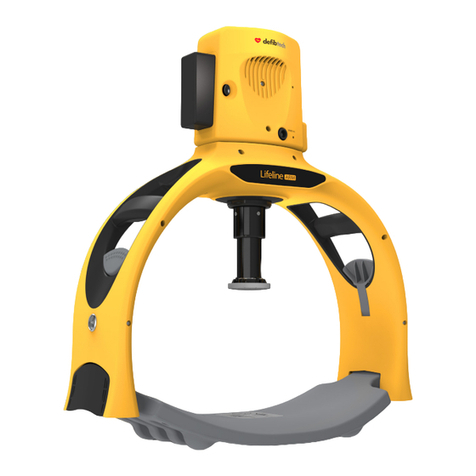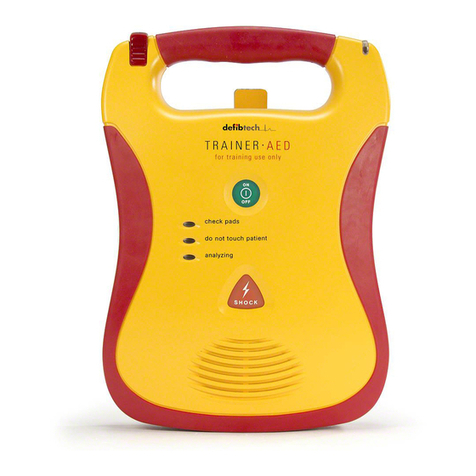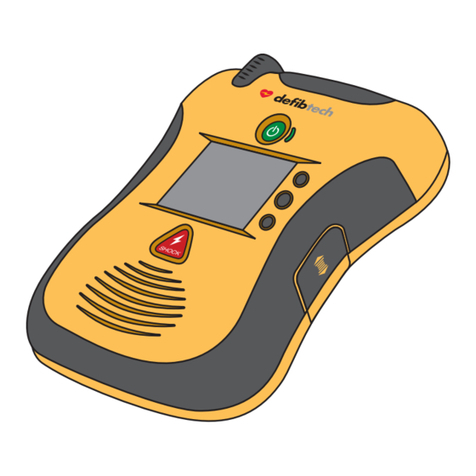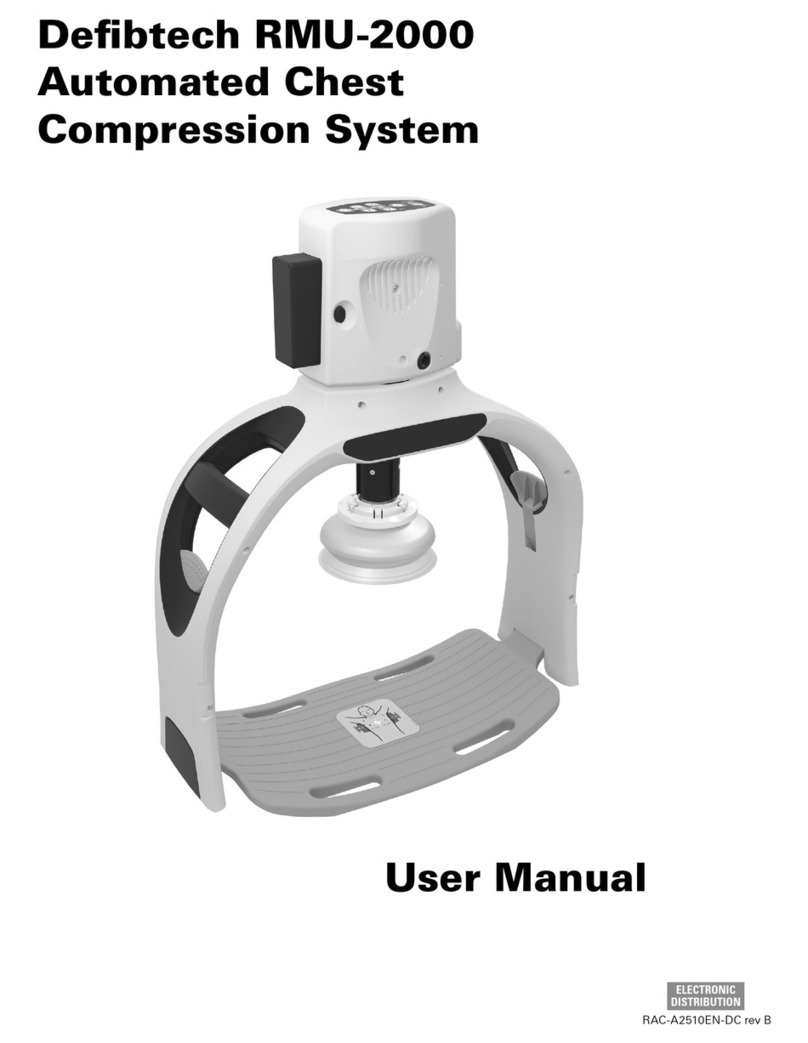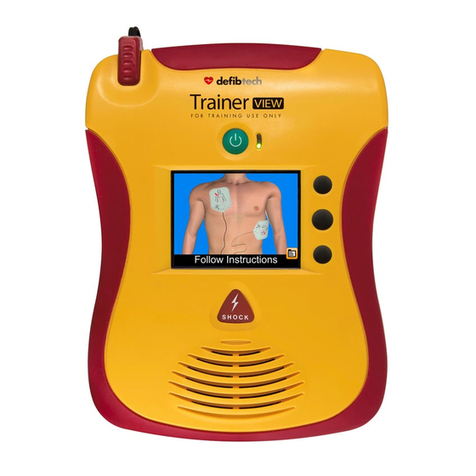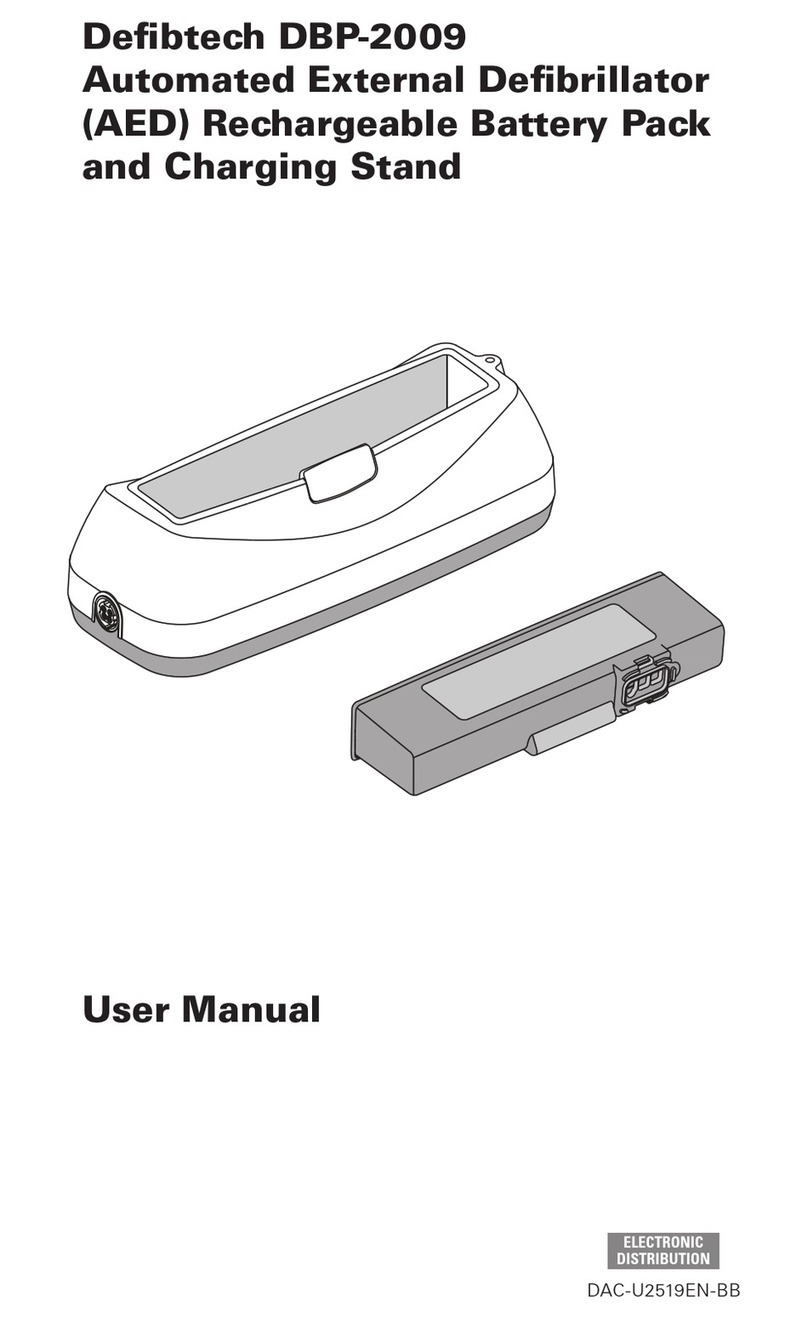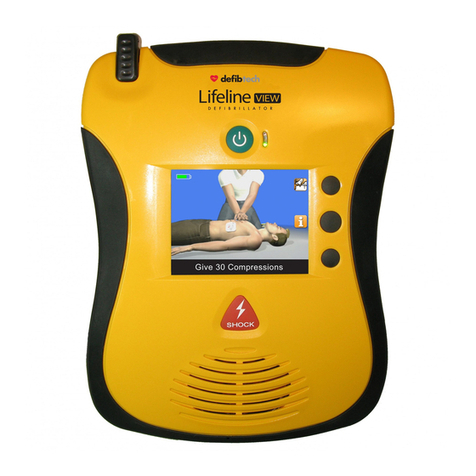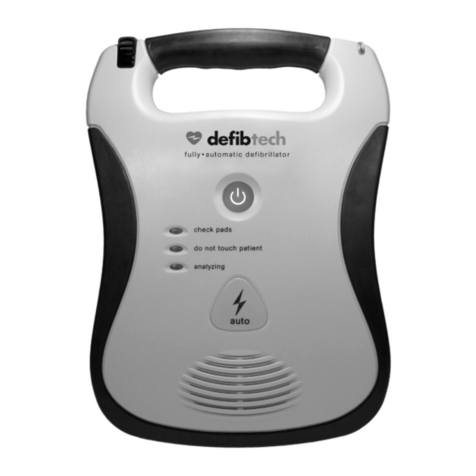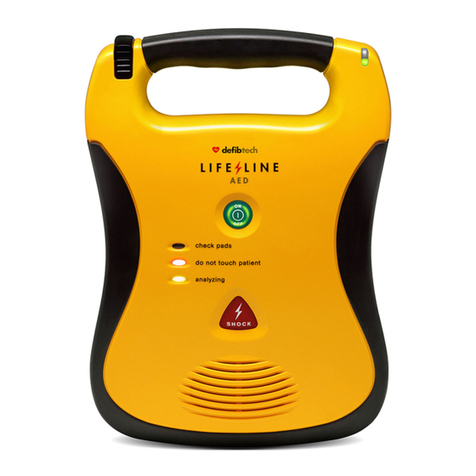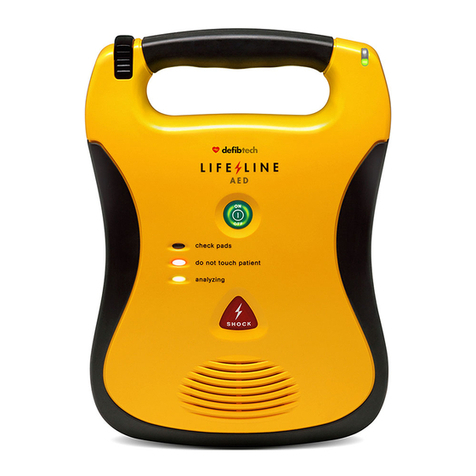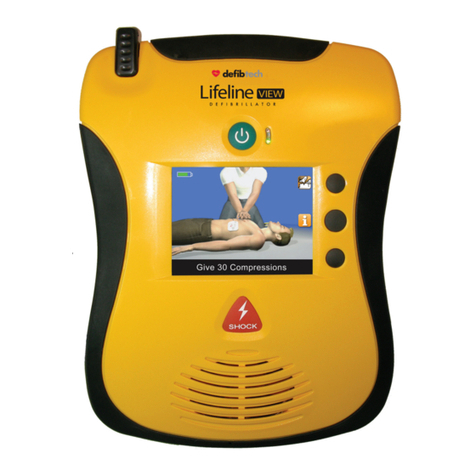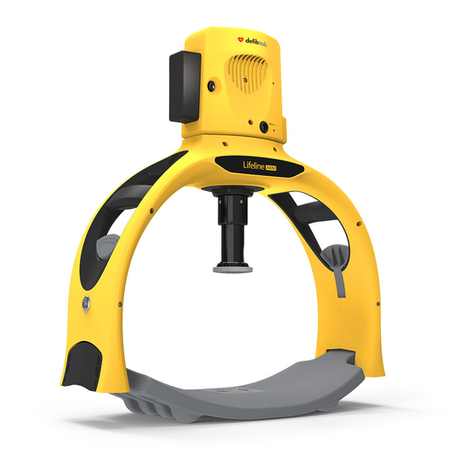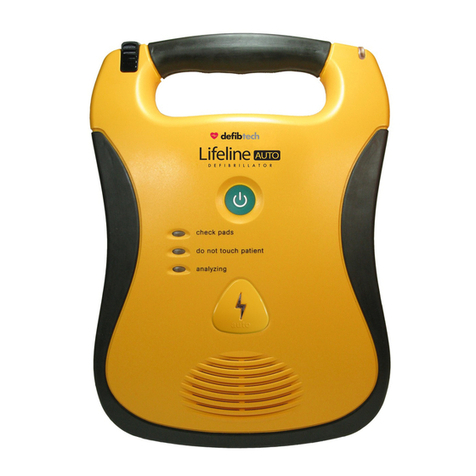2 3
DAC-A581-EN-DG DAC-A581-EN-DG
Issued: 2018-06-08
This manual applies to the following models and trade names
Trade Names Model Number
Lifeline/ReviveR DDU-100
Lifeline/ReviveR AUTO DDU-120
The Lifeline/ReviveR is referred to as the DDU-100 from this point forward in this manual.
The Lifeline/ReviveR AUTO is referred to as the DDU-120 from this point forward in this manual.
Statements that apply to all trade names/model numbers listed above are referred to in this
manual as “DDU-100 Series.”
Notices
Defibtech shall not be liable for errors contained herein or for incidental or consequential
damages in connection with the furnishing, performance, or use of this material.
Information in this document is subject to change without notice. Names and data used in
any examples are fictitious unless otherwise noted.
Limited Warranty
The “Limited Warranty” shipped with Defibtech AED products serves as the sole and
exclusive warranty provided by Defibtech, L.L.C. with respect to the products contained
herein.
Copyright
Copyright © 2018 Defibtech, L.L.C.
All rights reserved. Copyright questions should be directed to Defibtech.
For contact information, refer to the “Contacts” section of this document.
Tracking
U.S.A. federal regulations require Defibtech to maintain records for each AED it distributes
(reference 21 CFR 821, Medical Device Tracking). These requirements also apply anytime
there is a change in the AED’s location, including if you move, sell, donate, give away,
export or even throw it away. We depend on AED owners/users to contact us when these
things happen to ensure the tracking information remains accurate in the event we need to
share important product notices. If your location is outside the U.S.A., we ask you share
your information for exactly the same reasons. To keep your information up to date, please
visit www.defibtech.com/register.
CAUTIO N : Federal law (USA) restricts this device to
sale by or on the order of a physician.
Contents
Quick Use Instructions............................................................................4
When to Use (Indications, Contraindications, Summary of Primary
Clinical Studies, Potential Adverse Effects of the Device on Health,
Operator Training Requirements)............................................................. 5
Diagram of Components.........................................................................6
Setting Up the AED..................................................................................8
Using the AED ........................................................................................ 10
The Defibrillation Pads .......................................................................... 14
The Battery Pack ....................................................................................15
The Defibtech Data Card (optional)......................................................16
Checking AED Status............................................................................. 17
Maintenance ........................................................................................... 18
Troubleshooting.....................................................................................20
Warnings and Cautions .........................................................................22
Technical Specifications........................................................................ 24
Glossary of Symbols..............................................................................26
Warranty Information............................................................................29
Contacts ..................................................................................................30
This Operating Guide is to be used for concise guidance on set-up, use,
maintenance and technical specifications on DDU-100 and DDU-120 AEDs.
For comprehensive training on set-up, use and maintenance as well as complete
technical specifications, refer to the User Manual at www.defibtech.com
IMPORTANT: This Operating Guide only applies to
DDU-100 and DDU-120 AEDs running software version
3.2 or higher that include the marking shown at left on
the rear panel AED pad holder label as shown at right.
Please refer to www.defibtech.com/support for
information about DDU-100 and DDU-120 AEDs running
earlier software versions.
